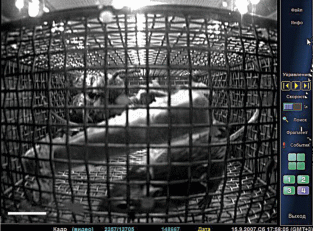Журнал эволюционной биохимии и физиологии, 2020, T. 56, № 7, стр. 762-762
Influence of a 12-Day Space Flight on the Skeleton Bones and Behavior of Mongolian Gerbils
V. I. Gulimova 1, *, Yu. S. Krivonosov 2, A. V. Buzmakov 2, D. A. Zolotov 2, I. N. Bukreeva 3, 4, P. E. Soldatov 5, V. E. Asadchikov 2, S. V. Saveliev 1
1 Federal State Scientific Institution Research Institute of Human Morphology
Moscow, Russia
2 Shubnikov Institute of Crystallography FSRC “Crystallography and Photonics” RAS
Moscow, Russia
3 Institute of Nanotechnology-CNR
Rome, Italy
4 P.N. Lebedev Physical Institute RAS
Moscow, Russia
5 SSC RF Institute of Biomedical Problems RAS
Moscow, Russia
* E-mail: gulimova@yandex.ru
The effect of weightlessness on the humerus and the behavior of adult male Mongolian gerbils (Meriones unguiculatus) was studied after a 12-day orbital experiment onboard Foton-M3 satellite. The humerus bones of flight gerbils were investigated in comparison with control samples by X-ray microtomography on a tomograph developed at the Federal Research Center for Crystallography and Photonics of the Russian Academy of Sciences. An after-flight decrease in the volume of the humerus by an average of 9.1% and a linear absorption coefficient of 4.6% was found. Maximum changes in volume value were detected in the cortical part of the proximal epiphyses and diaphyses, and maximum decrease of the X-ray absorption was noted in the epiphyses. For the cortical part of the humerus, the gradient of volume value loss was revealed from the maximum in the proximal epiphysis to the minimum in the distal epiphysis.
In gerbils’ behavior during the onset of weightlessness the chaotic flotations prevailed. However, from the 1st day of the flight, animals could fix themselves to the bars of the cage grid, grouping near feeders and move around the cage in weightlessness, clinging to the grid with all four or only two front paws. Both slow movements and running along a winding trajectory or in a circle involving one or more gerbils were revealed. Similar coordinated movements in weightlessness (circling) were previously described by other authors for mice on the ISS. From the 2nd day of the flight, gerbils could make targeted jumps, allowing them to cut off the corners while running and feed, floating on a food briquet. The activity of animals decreased during the flight up to 50–60% of the initial. Also, there was a tendency to regular decrease in activity in the middle of 12-hour periods of daylight cage lighting. In floating gerbils, it was discovered the ability to sleep in a characteristic relaxed posture like human neutral body posture in weightlessness.
Thus, Mongolian gerbils quickly and successfully adapt to weightlessness, showing slight demineralization of the humerus after a 12-day space flight.
Fig. 1.
Circular running (cirсling) of Mongolian gerbil in weightlessness (foreground). A floating food briquet and the group of gerbils clustered together in the left corner of the cage, holding onto the bars of the cage, are visible in the background. Scale bar – 2 cm.

Supported by the bilateral project CNR/RFBR (2018–2020) – accordo CNR-RFBR delle Relazioni Internazionali (CUP B86C17000460002 & Russian number RFBR 18-52-7819) in tomography measurements and the national project RFBR 18-29-26028 in tomography images processing.
Список литературы отсутствует.
Дополнительные материалы отсутствуют.
Инструменты
Журнал эволюционной биохимии и физиологии


